
Tissamaharama – despite the overlong name – is a good base to visit two national parks, Bundala and Yala. But it is also a good birding location on its own, particularly for some owls.
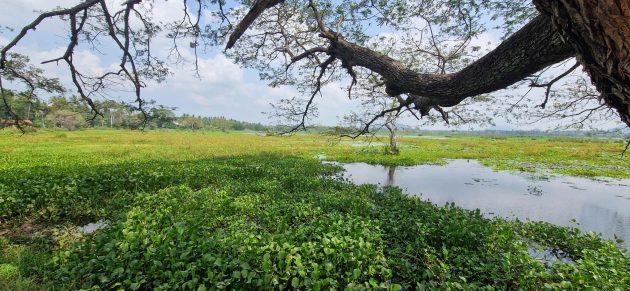
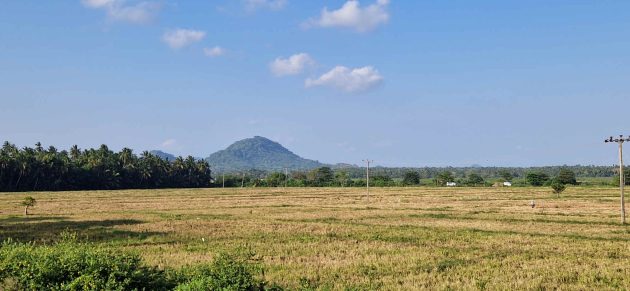
So, let’s start with those. Fortunately for morning people like me, the local guides know their day roosts, so the horrors of nighttime owling can be mostly avoided.
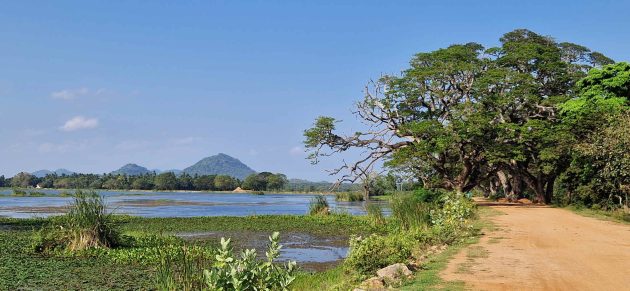
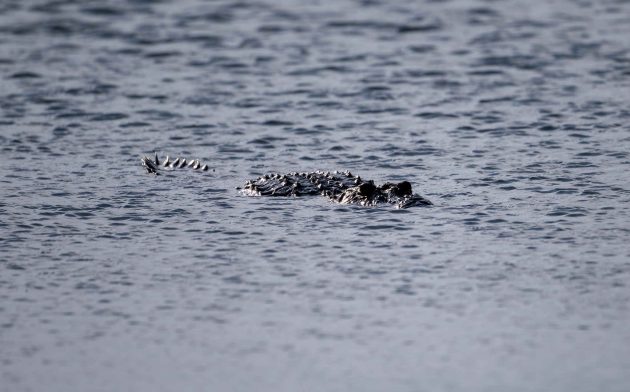
One garden had not one but two owl species in close proximity. The Brown Boobook looks very similar to the Northern Boobook migrating through Shanghai, but it is non-migratory.

The scientific name Ninox scutulata is a bit of a stretch – scutulata indicates that the bird is diamond-shaped. Yeah, whatever.

Apparently, it is not an uncommon bird even in the gardens of the capital, Colombo – one paper describes observations of the species in just that environment.

The boobook shared the garden with a much smaller owl, the Jungle Owlet.
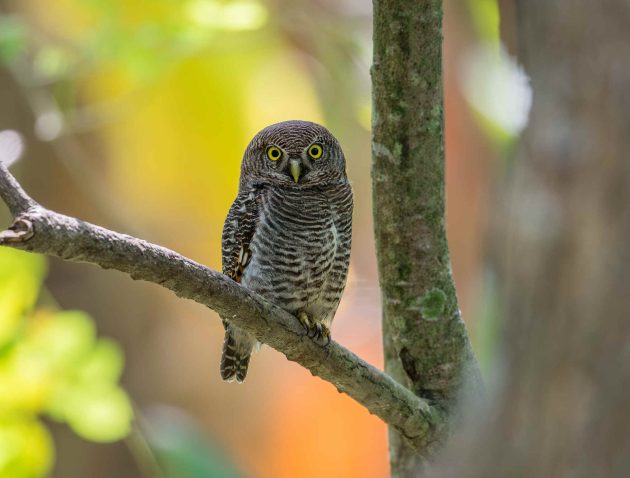
The bars across its body give it an attractive look, and the scientific name Glaucidium radiatum (radiatus means furnished with rays) also milks this aspect in a slightly exaggerated way.
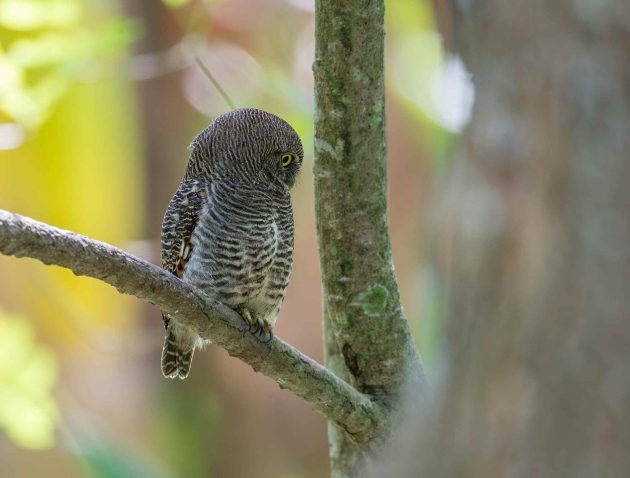
It specializes in eating insects, which account for 85% of its diet, which allows it to coexist with other owls with different diets (source).

Researchers have even looked at how the species was affected by climate change – particularly past ice ages.
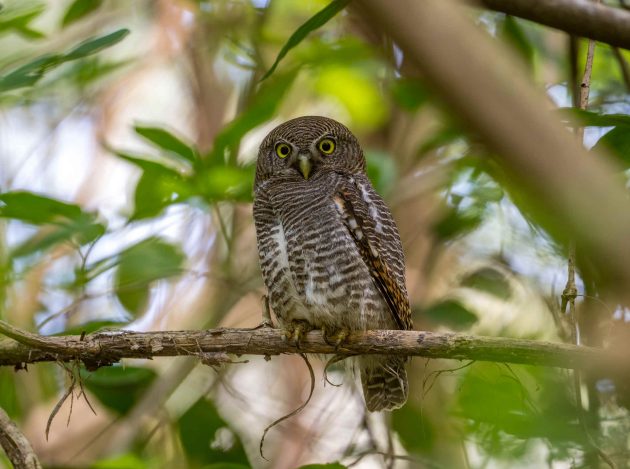
(The journal cited in the last sentence, Frontiers in Ecology and Evolution, also has other exciting papers with titles such as “Dog Urine Has Acute Impacts on Soil Chemistry in Urban Greenspaces“.)
Another garden in Tissamaharama had a roosting pair of Indian Scops Owls.
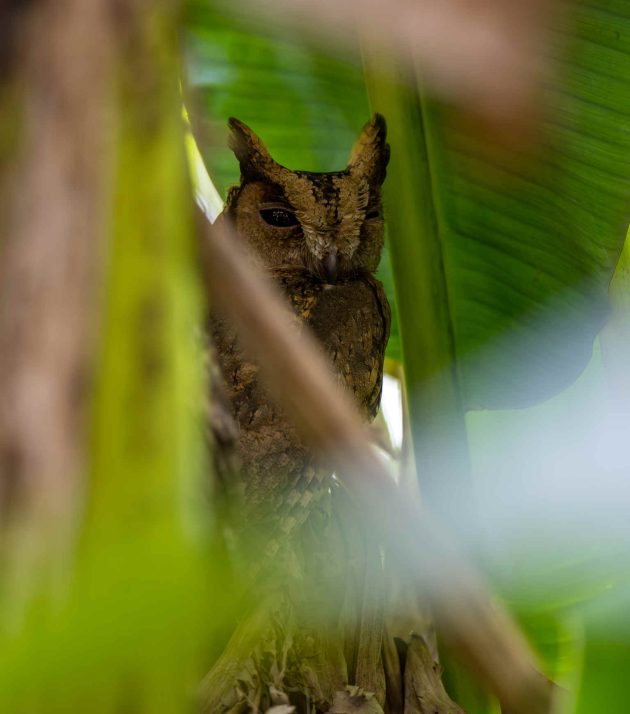
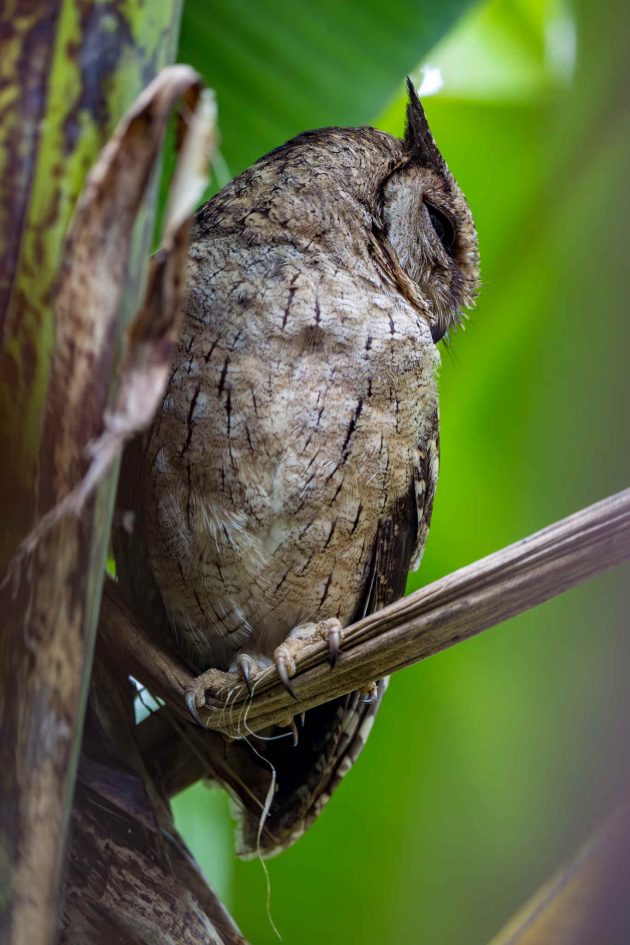
In a potent statement against racism, the pair combines one of the rufous morph with the grey-brown morph.

The HBW explanation for the scientific name Otus bakkamoena is a bit puzzling: bakkamoena is derived from the “Sinhala name Bakamuna for various large owls”. A large owl this is not.

The final owl seen at Tissamaharama did require some – fortunately relatively mild – night owling. A Barn Owl roosts in a tree cavity next to a lake and is known to come out shortly after sunset.

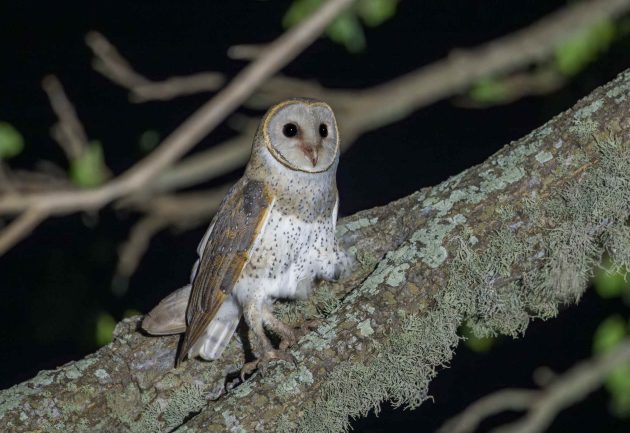
It adds Sri Lanka to the other countries I have seen Barn Owls – China, Germany, South Africa.
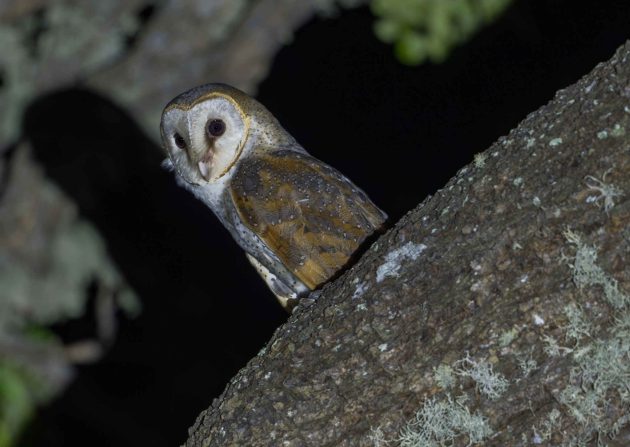
Tissamaharama is located close to several lakes with rich and often fairly approachable birdlife.

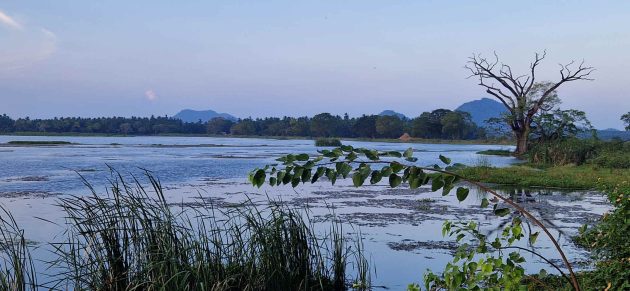
Like the Clamorous Reed Warbler, which looks similar to Shanghai’s Oriental Reed Warbler and unfortunately sounds similar to it, too:
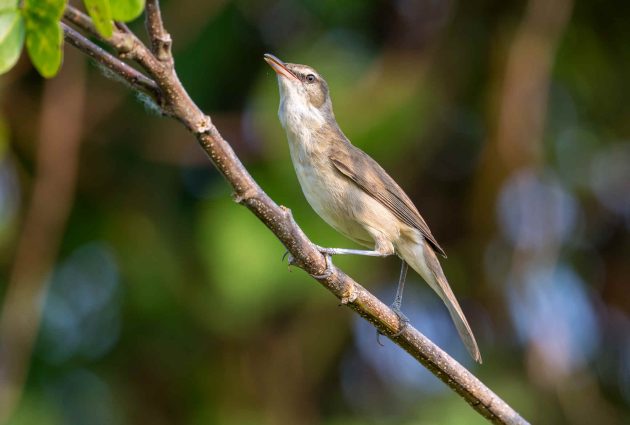
“Very loud, combines harsh grating, buzzy, raucous, rollicking, and chattering sounds with sweeter notes and loud squeaks, typical refrain karra-karra-kareet-kareet-kareet or prit-prit-pritik, each repeated three or four times and lasting up to eight seconds” (HBW).
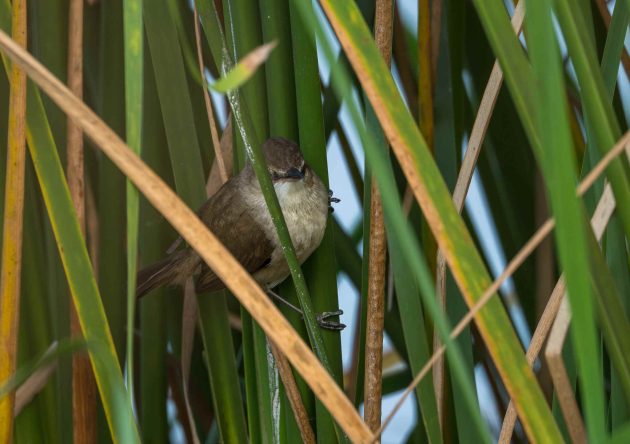
And many other species using the water plants as floating devices, hiding places, and hunting grounds:
Indian Pond Heron
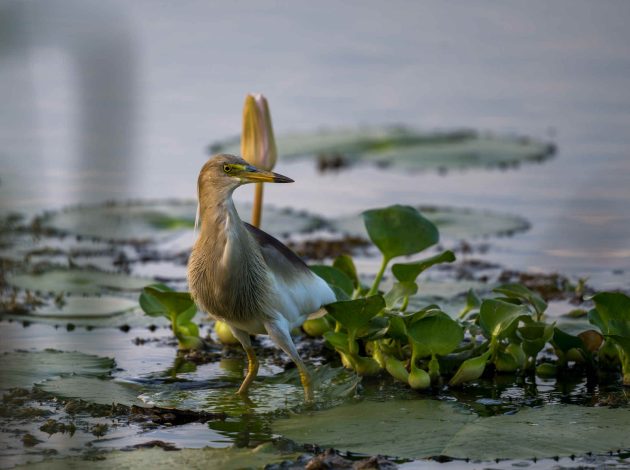

Oriental Darter
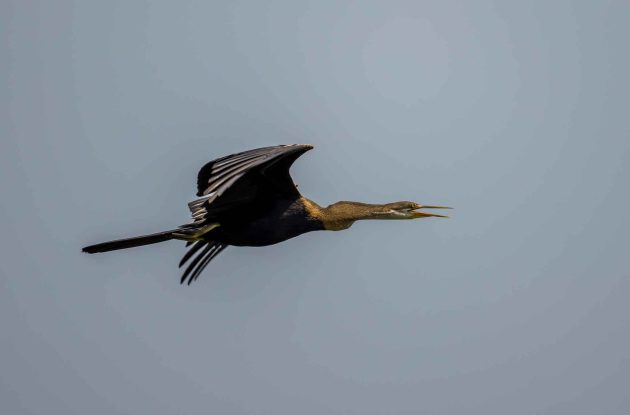
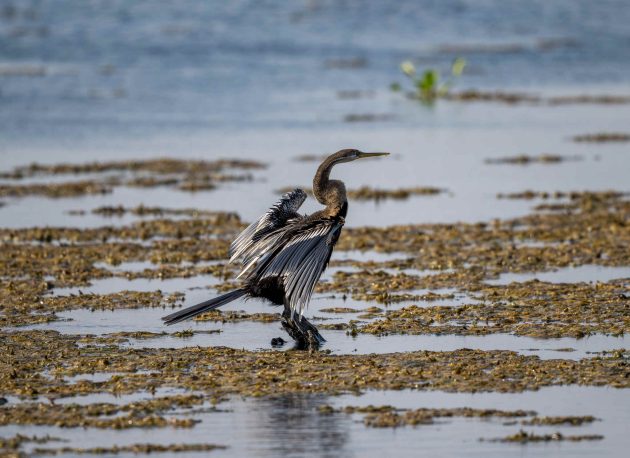

Yellow Bittern

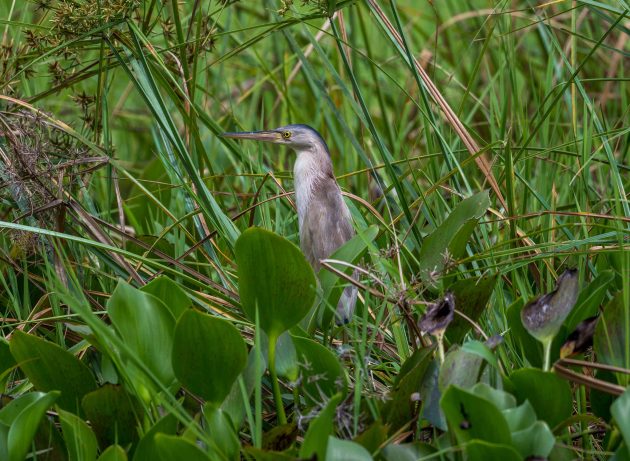
Cotton Pygmy Goose

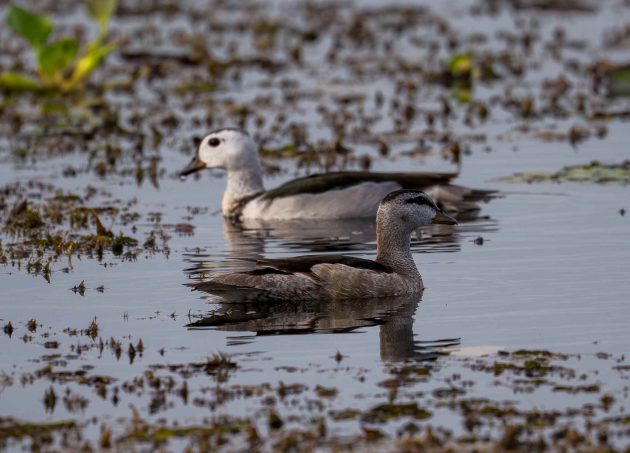
Lesser Whistling Duck

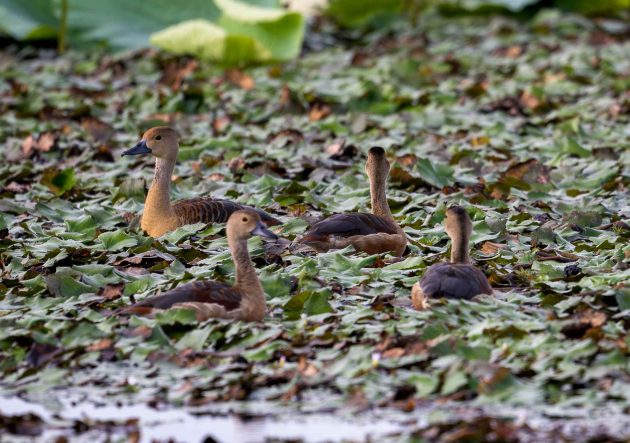
Little Grebe
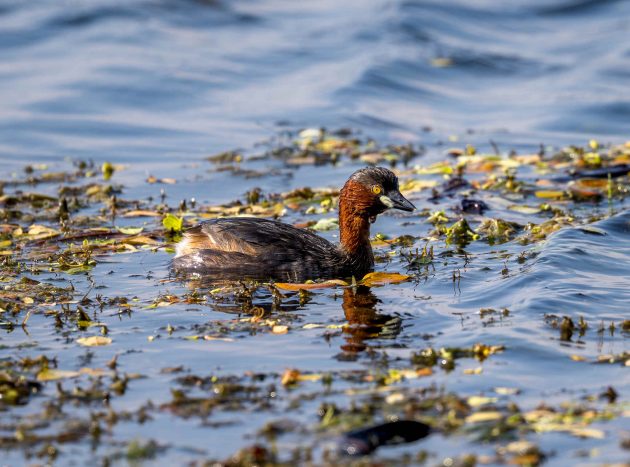
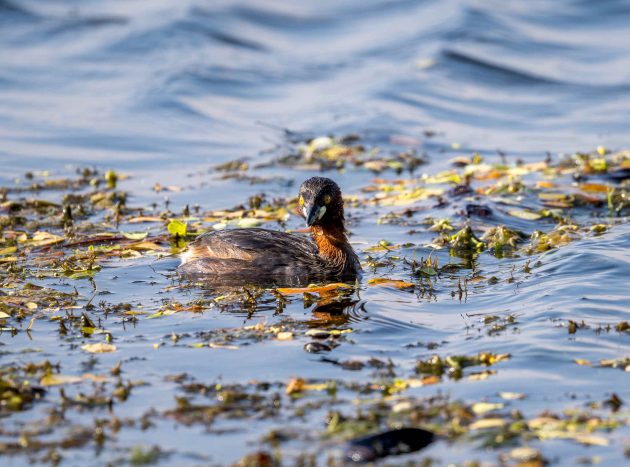
Grey-headed Swamphen (with chicks)
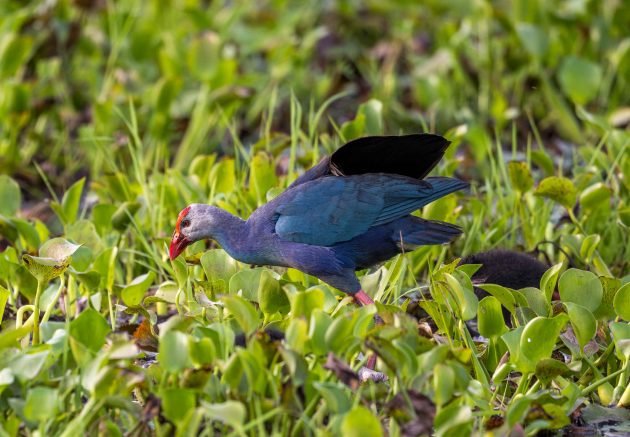
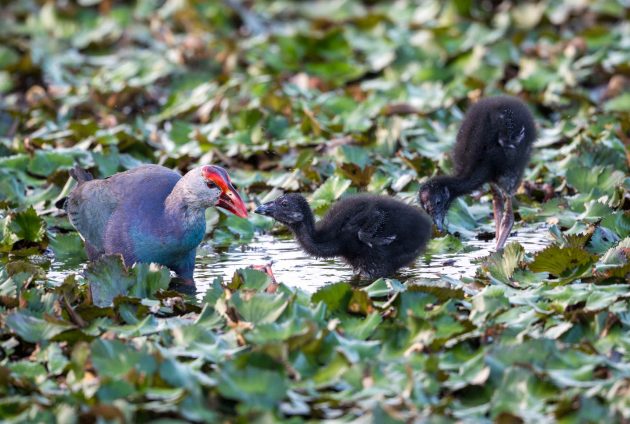
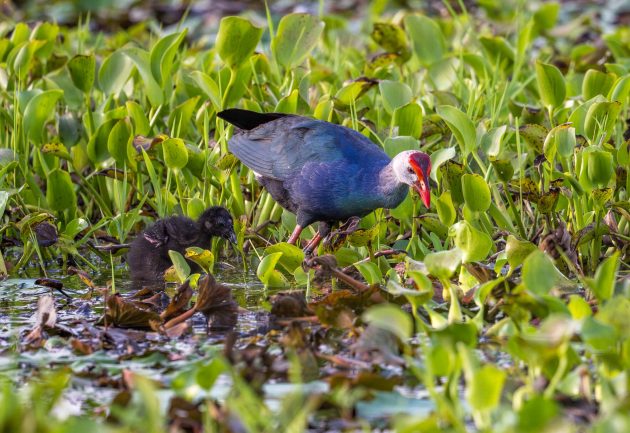
Pheasant-tailed Jacana
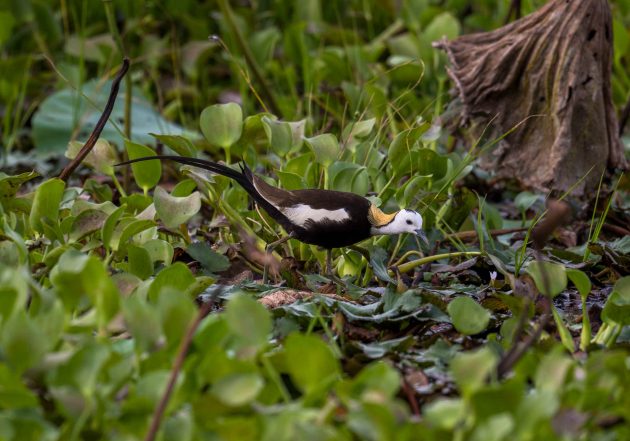

Red-wattled Lapwing
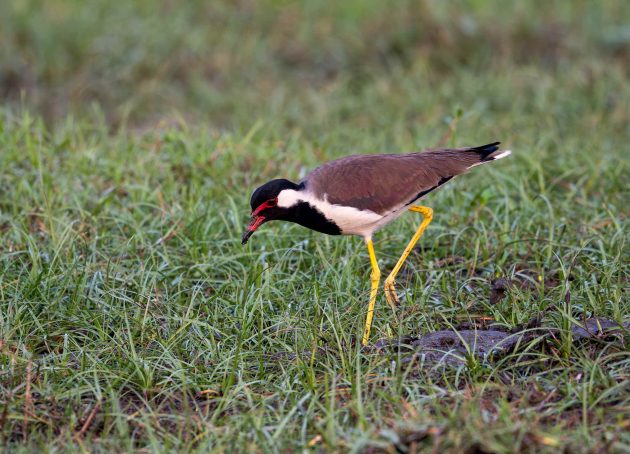
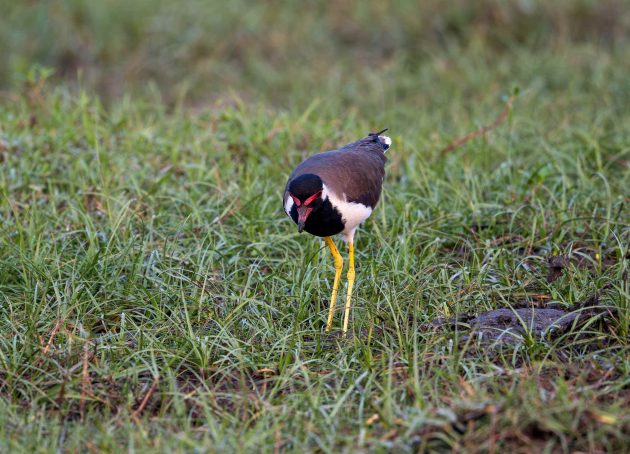
White-breasted Waterhen

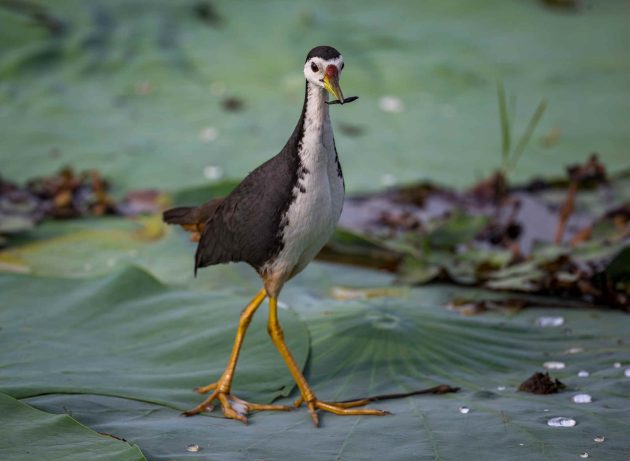
Purple Heron
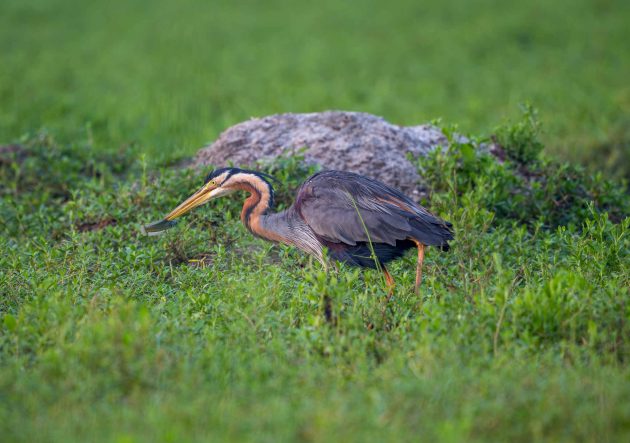
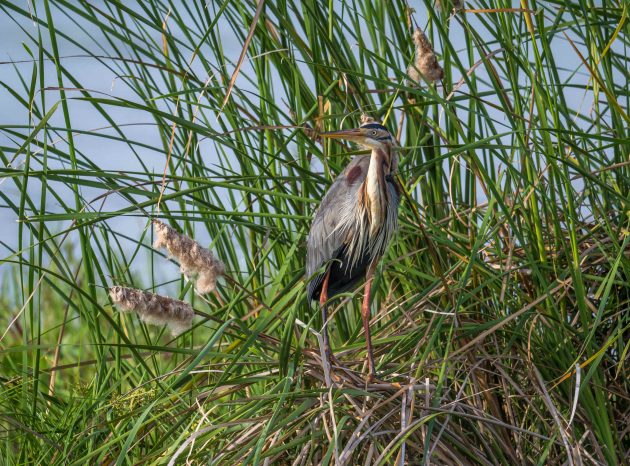
The same habitat is observed from higher-up positions by kingfishers, prinias, and bee-eaters:
White-throated Kingfisher
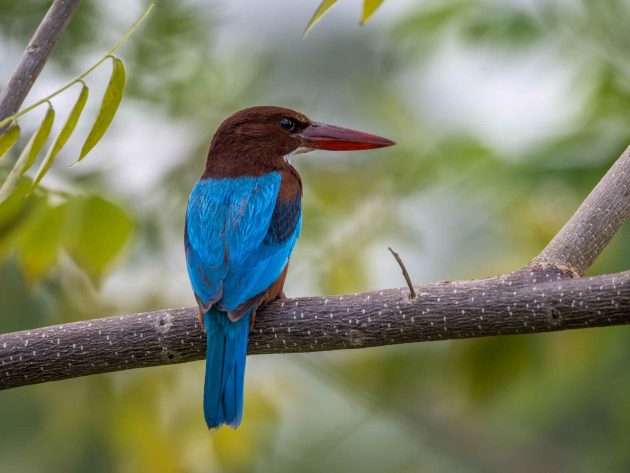
Stork-billed Kingfisher
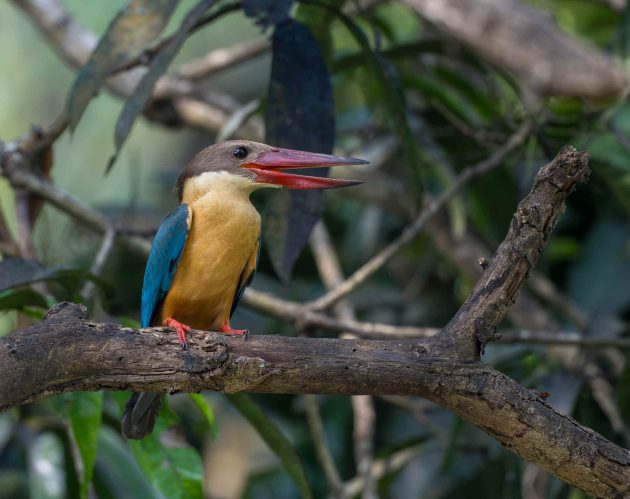
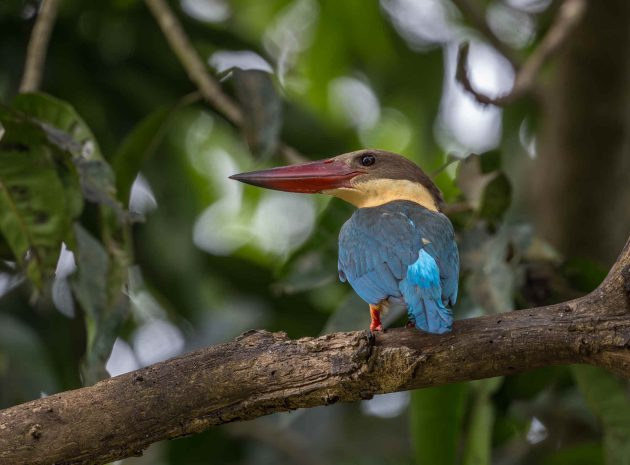
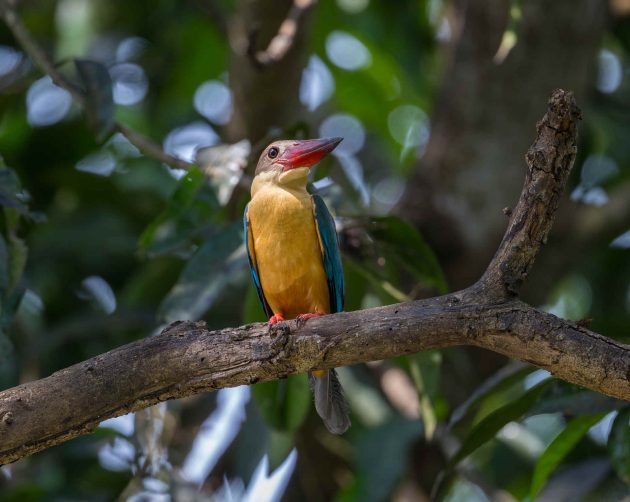

Ashy Prinia
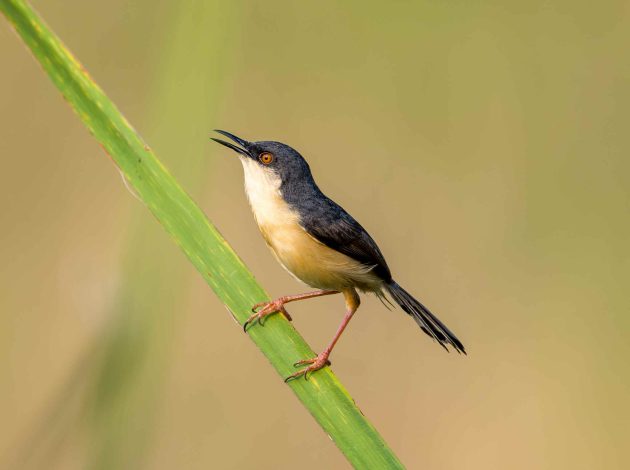
Asian Green Bee-eater

… as well as raptors:
Changeable Hawk-eagle
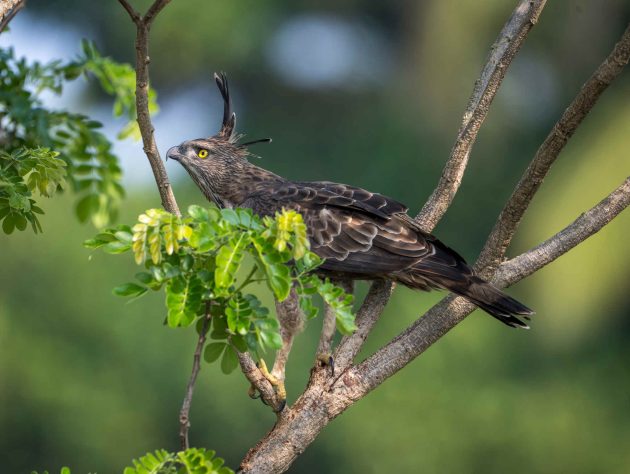
Brahminy Kite
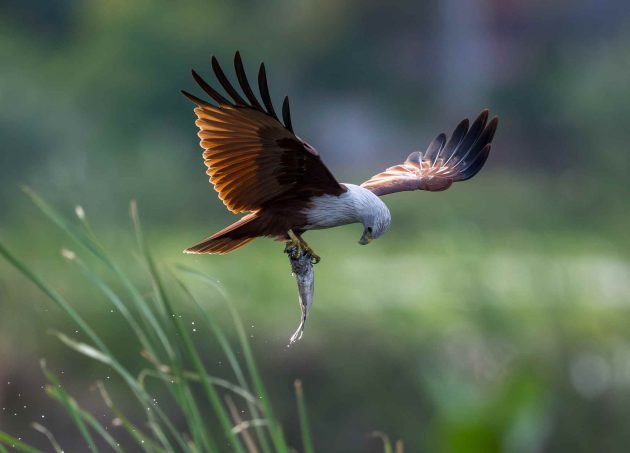
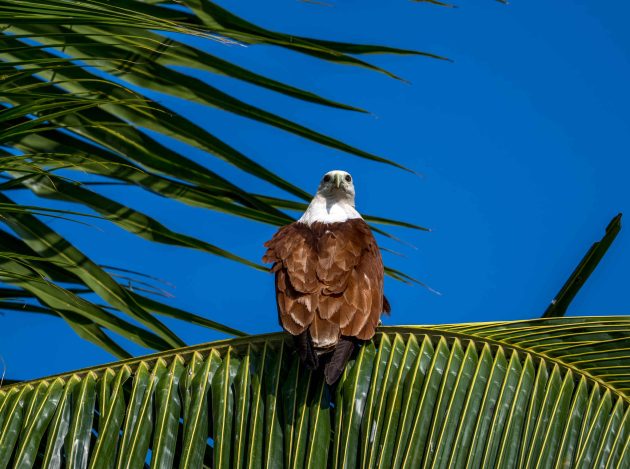
The Jacobin Cuckoo is a proper cuckoo, i.e., it cannot be bothered with bringing up its chicks. I can relate to that.

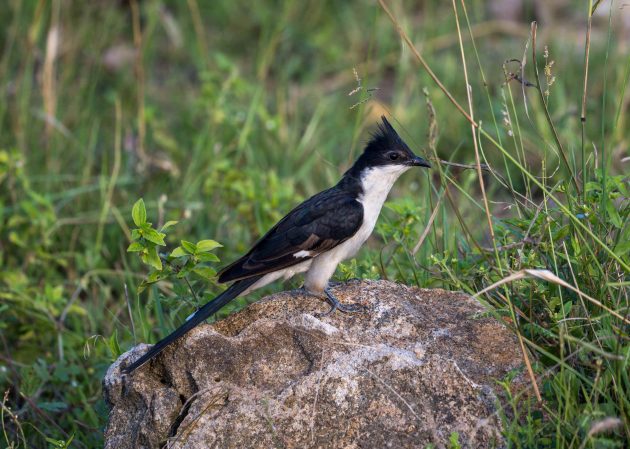
In Sri Lanka, the Yellow-billed Babbler is a host species.
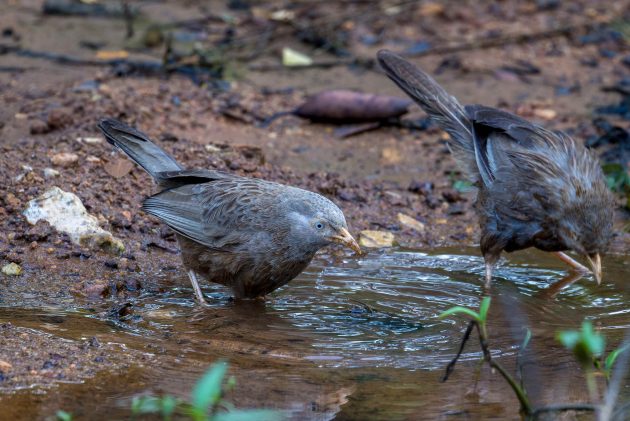
Interestingly, one paper finds that in Sri Lanka, the begging call of the juvenile Jacobin Cuckoo is very similar to that of the babbler.
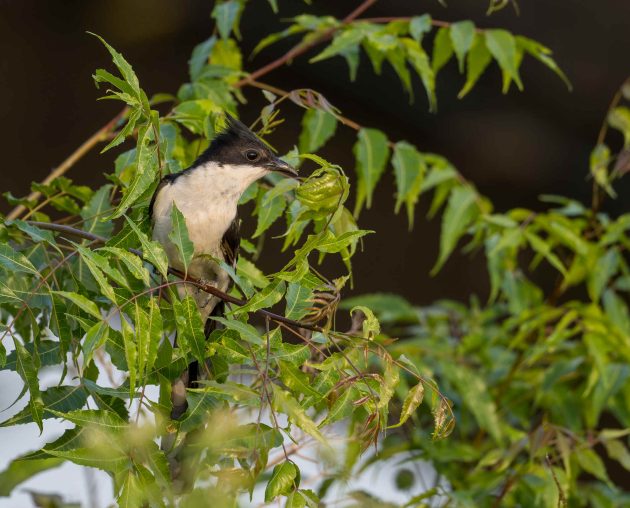
The scientific name of the Black-hooded Oriole, Oriolus xanthornus, indicates that this is a yellow bird (xanthos yellow; ornis bird). Creative, this is not.
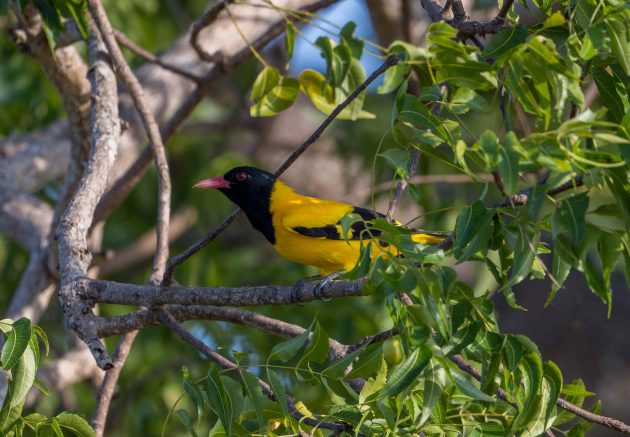
Research identified two singing variants of the species, one primarily used by males and one by females.
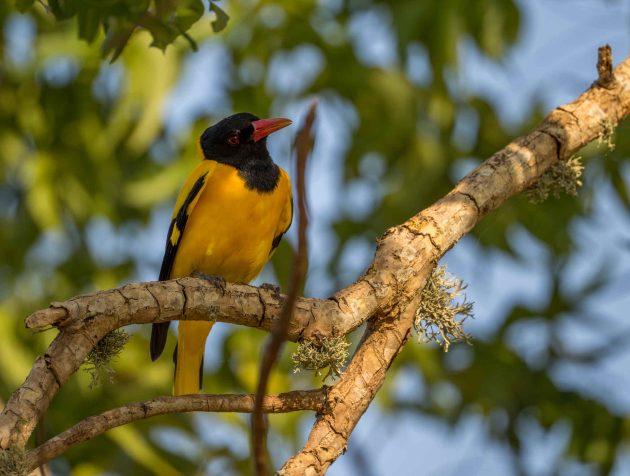
Two barbets are common around Tissamaharama, the Brown-headed Barbet …
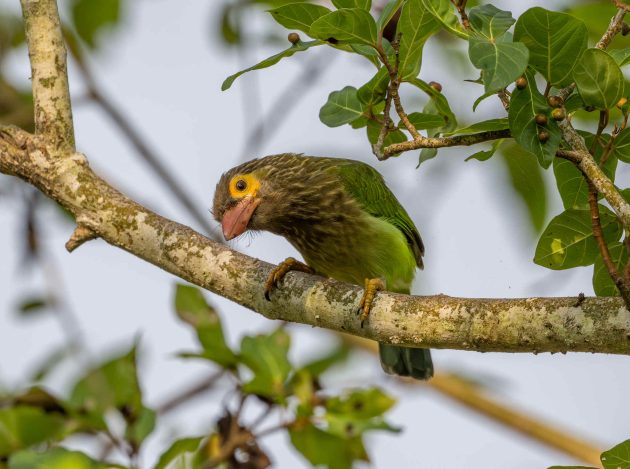

… and the Coppersmith Barbet.
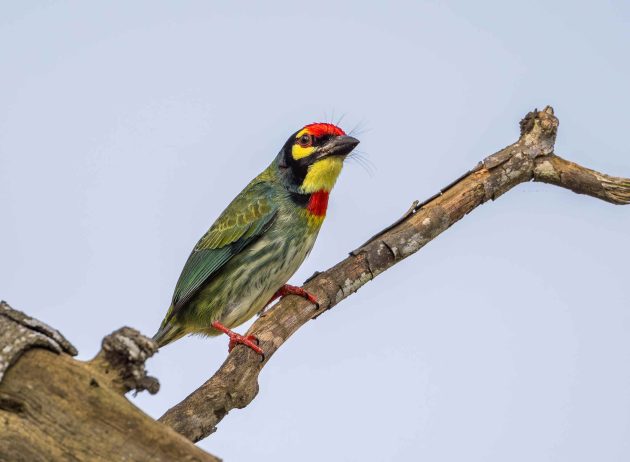
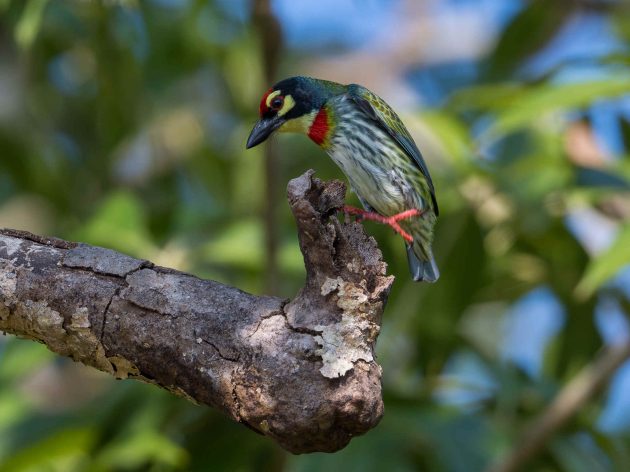
The White-naped Woodpecker follows the color coding international norms have established for woodpeckers – red indicates the male.
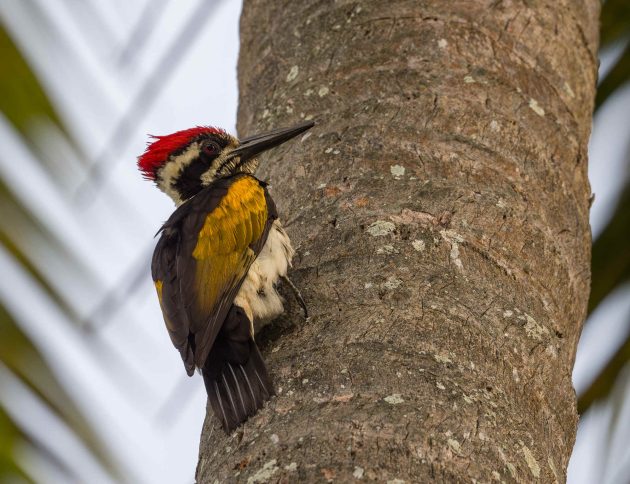
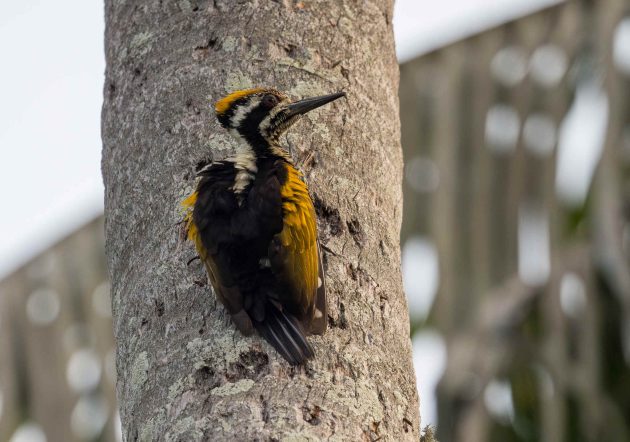
For Red-backed Flamebacks, the distinction is less strict, though the female (not shown) has less red on the crest.


The Crested Treeswift seems to have borrowed this approach from woodpeckers – red on the face indicates a male.


The female is incubating, sitting on a tiny nest swinging in the wind (video).

Before COVID, it probably seemed like a good idea to give a bird a scientific name like Hemiprocne coronata. Incidentally, the Hemiprocne indicates that the bird is a half- or small swallow.

There are other ways to distinguish between male and female birds, as Jerdon’s Leafbird illustrates. Here is the female …

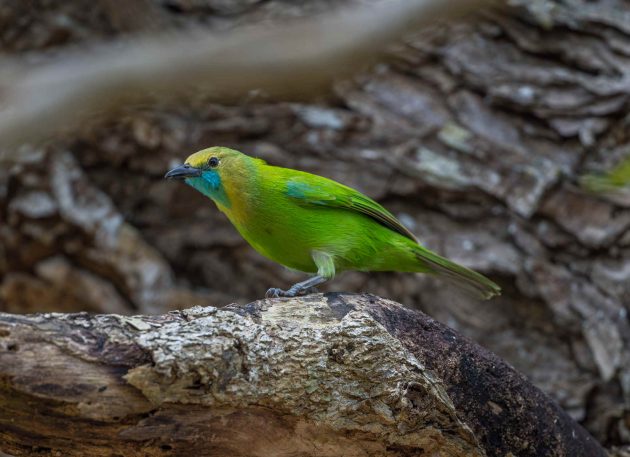
… and the male.


For reasons not quite clear to me, Indian Nightjars like to sleep on roads at night. Maybe some kind of protest or blockade? If yes, it is terribly ineffective.

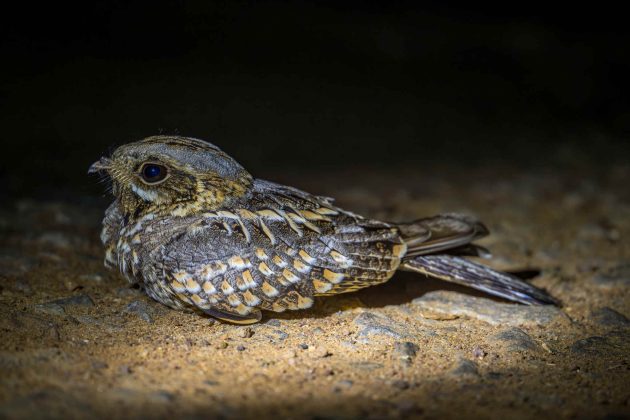
Actually, one paper claims that the opportunity for camouflage is an important criterion for habitat selection – maybe the road surface comes closest to fulfilling that need.
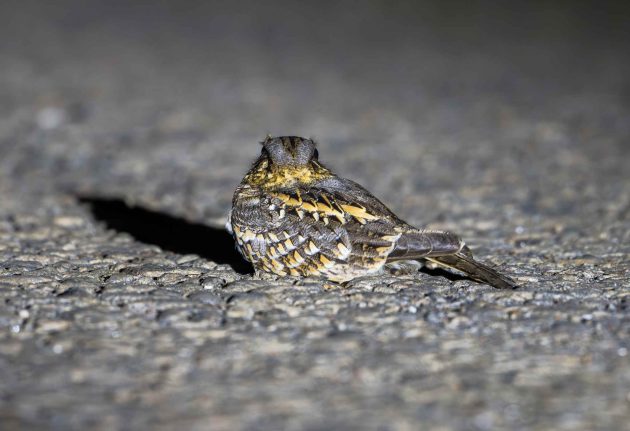
Some rather ordinary birds can look beautiful in the right light. Example: Paddyfield Pipit.

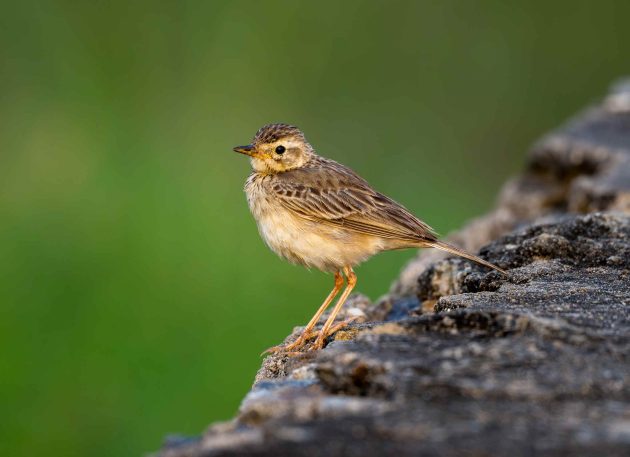
If – as it is sometimes claimed – black and white are not colors, the Tricolored Munia should be renamed to Unicolored Munia.
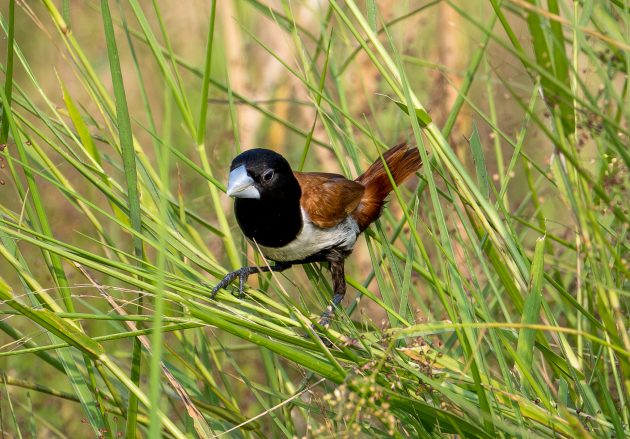


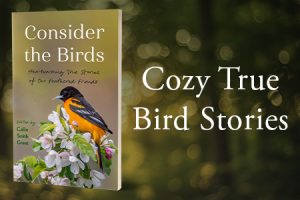

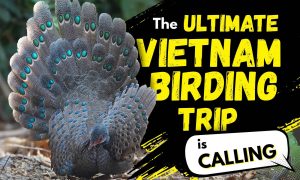

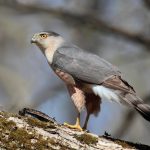

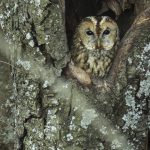




Bicoloured munia, that beak is blue!
Thanks for sharing the great photos. You write: “Actually, one paper claims that the opportunity for camouflage is an important criterion for habitat selection – maybe the road surface comes closest to fulfilling that need.”
I have always wondered how some birds and insects know what they look like so they can choose the right roosting or resting sites so they can use their camouflage effectively.
Very good point – I think there could be an interesting scientific paper in whether different morphs of say Oriental Scops Owls choose their roosting tree – red vs. greyish … my intuition says they “know” which background offers better camouflage …
Any birds in Sri Jayawardenepura Kotte?